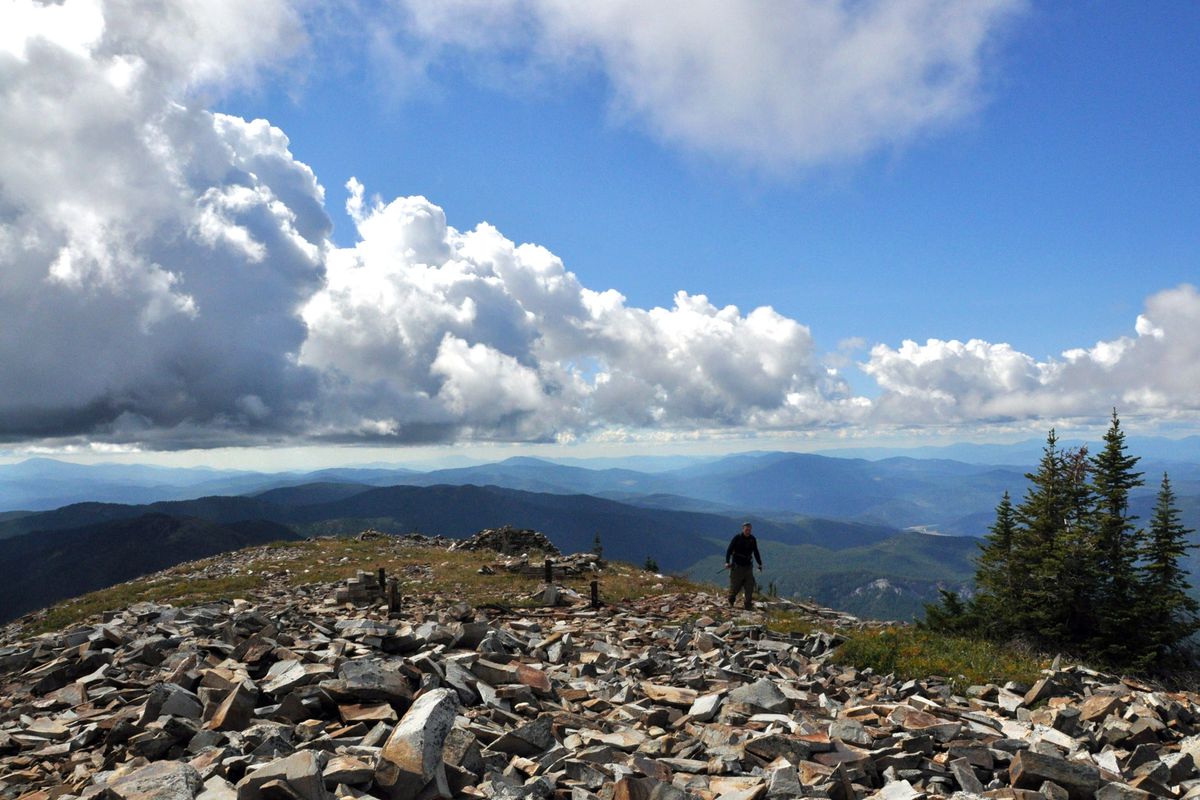Wide-open wilderness
Washington groups set to chime in on national forest debates

There’s something for everyone – trail users, ranchers, loggers, hunters, ORVers and wilderness advocates – to like and dislike in the early proposals for managing the Colville and Okanogan-Wenatchee national forests.
Since 2003, officials have been collaborating with user groups and gathering science for forest plans that will guide forest management for the next decade or two.
Much work is left to be done – a final environmental impact statement isn’t likely to be released until 2013 – but the public is finally getting its first good look at how their interests are being shaped into the plan.
The Colville’s draft forest plan revisions, including proposals for new wilderness areas, have been posted online and will be presented during public meetings in the Spokane and Newport area this week.
Preliminary recommendations include 101,300 acres of wilderness in addition to the 29,000 acres of current wilderness in the 1.1-million acre Colville National Forest.
The Okanogan-Wenatchee National Forest plan recommends adding 125,800 acres to seven of the forest’s existing wilderness areas, which make up more than a third of the 1.47-million acre forest.
In addition to wilderness issues, topics to be highlighted during the public meetings include logging and vegetation management, motorized and non-motorized forest access and wildlife habitat.
The meetings are geared to providing information the public can uses in submitting written comments, which are due by Sept. 28.
The wilderness recommendations will help determine how trails and access develop in the wildest of the Colville’s roadless areas, but only Congress can officially designate wilderness.
Various user groups already have been carving out their positions.
Livestock groups have used op-ed pieces in northeastern Washington newspapers to take stands opposing wilderness.
A new conflict that wasn’t seen in the early 1980s, the last time Colville wilderness was debated, pits two non-motorized user groups: mountain bikers against horse riders and hikers.
Mechanical equipment is not allowed in official wilderness – and that includes bicycles and chain saws.
Mountain biking, which wasn’t even a mainstream sport in this region in the early ’80s, is mentioned in all of the discussions that either support or reject wilderness.
The five main Colville Forest areas recommended for wilderness in the preliminary proposals are:
• Salmo Priest adjacent, 13,600 acres in addition to the existing Salmo-Priest Wilderness northeast of Sullivan Lake.
• Abercrombie-Hooknose, 35,200 acres in the Selkirk Mountains on the west side of the Pend Oreille River near Ione.
• Bald Snow, 15,200 acres, in the Kettle Range south of Sherman Pass.
• Profanity, 28,300 acres, in the Kettle Range north of Sherman Pass.
• Hoodoo, 11,000 acres, in the Kettle Range west of Kettle Falls.
While these issues have been discussed at numerous public meetings and working group sessions over the years, considerable posturing goes on behind the scenes.
The Washington Chapter of Backcountry Hunters and Anglers, which supports many of the wilderness proposals, has had two meetings with Rep. Cathy McMorris Rodgers’ staff, including one in April in Washington, D.C., and another in May in Spokane.
“Our meeting in D.C. went very well, with a staffer recognizing the need for a balanced approach that has something in it for everybody,” said Jeff Holmes, BHA member who recently moved from Cheney to the Tri-Cities.
“Our second meeting in Spokane left us less certain about the Congresswoman’s commitment to bringing the different sides of the issue to the table to work something out.”
Since 2002, the Northeast Washington Forestry Coalition, which includes conservation groups and timber industry representatives, has negotiated more generous wilderness proposals in return for freeing contested timber sales for harvest.
This coalition has garnered wilderness support from Vaagen Brothers Lumber, a major northeastern Washington employer.
But Ferry County Commissioner Brian Dansel wrote a letter to the editor published in three northeastern Washington newspapers in which he said “…I adamantly oppose a ‘wilderness area’ designation for any part of Ferry County.”
Dansel said the conservation groups proposing wilderness are the same groups that “challenged timber sales for years, resulting in an entire segment of our local economy being forced out of work.”
Mike Petersen, executive director of The Lands Council, suggests that market and economic factors also have been involved in changes to the timber industry. However, he said conservation groups continue to try to move forward from the days when wholesale clearcutting was raising havoc with steams, wildlife and recreation.
“By working with timber companies and the Forest Service, we have found agreement on a sustainable plan that provides jobs in the woods, as well as all the other benefits the Colville forest can provide,” he said.
“Supporting new Wilderness in the Kettle Range of Ferry County was an important part of reaching that agreement.”